Pesticide management in the banana industry

The use of pesticides to control pests and diseases is extensive in banana plantations, particularly in those that produce for export and throughout the year. Banana crops are particularly susceptible to infestations as most are grown in the tropics, favouring conditions for pests. Pesticides are used to control different banana pests, including Black Sigatoka, which in banana plantations can significantly decrease yields by 35% to 50%. Contamination caused by the intensive use of agrochemicals in monoculture production remains a challenge.
Impacts of overuse and improper handling of pesticides:
- Damage to occupational health of workers, including risk of chronic and acute poisoning
- Public health risks, including poisoning of consumers
- Harm to the environment, including soil and water contamination and reduction of biodiversity
- Poisoning of wildlife, livestock and pollinators
- Reduction of yields
- Harm to production costs and export potential.
Concerns about these risks are increasingly reflected in demands from the market regarding the use of pesticides. For producers, this development presents a need for change in their production and trading systems, updating their technical knowledge and maintaining at the same time the economic viability of banana farms.
It is therefore important to minimize pesticide use and ensure their sound management before, during and after application to reduce social and environmental risks.
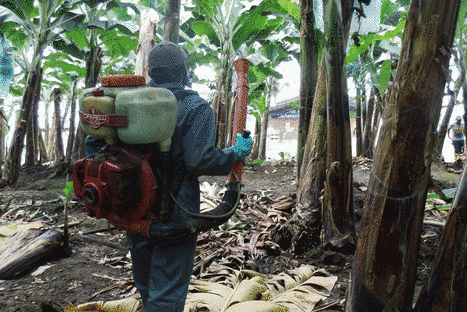
Pesticide risk reduction
Banana production should follow the following steps in pesticide risk reduction as recommended by FAO:
|
Step 1: Reduce reliance on pesticides
- Eliminate unjustified pesticide use using an Integrated Pest Management (IPM) approach.
- Increase use of non-chemical pest management and
A pest management plan is defined to help with this step and to take a proactive approach to pest management and use alternative measures to control the development of pests and diseases.
A pest management plan should encourage integrated pest management and establish pest and disease monitoring.
Integrated Pest Management Integrated pest management (IPM) is defined by FAO as “the careful consideration of all available pest control techniques and subsequent integration of appropriate measures that discourage the development of pest populations and keep pesticides and other interventions to levels that are economically justified and reduce or minimize risks to human health and the environment. IPM emphasizes the growth of a healthy crop with the least possible disruption to agro-ecosystems and encourages natural pest control mechanisms”.
|
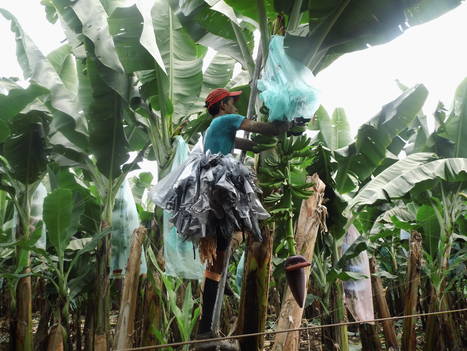
Step 2: Pesticide selection
- If pesticide use is deemed necessary, carefully select the most appropriate product.
- This should take into account a number of factors: effectiveness; environmental and human health hazards; risks associated with the recommended application method; personal protection requirements and pre-harvest intervals.
Each farm must have a list of permitted products. This list should be based on:
- The list of approved products legally permitted in the country concerned;
- The list of products permitted under certification programmes of the plantation owner or main actors in the supply chain and the requirements of the country of destination for the final product.
- This list should include commercial names, active ingredients, unit size, hazard classification, manufacturer and conditions for use.
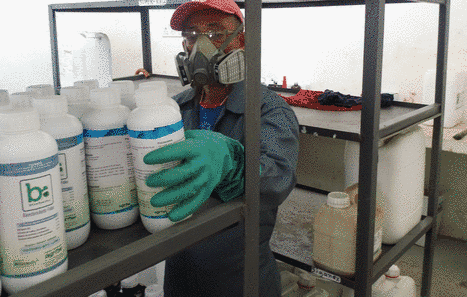
Step 3: Proper use of product
Among the practices adopted to promote proper handling and use of pesticides:
1. Development of procedures and protocols about:
- Personal Protection Equipment (masks, gloves, goggles, coveralls, etc)
- Proper pesticides storage
- Instructions for proper application of pesticides
- Procedure to handle treated plastic bags
- Procedures for cleaning of application equipment
- Procedures for collection and/or disposal of empty pesticide containers
- Calibration of application equipment
- Health monitoring for plantation workers
- Procedure to load and unload pesticides
- Checklist to load and unload pesticides
- Calibration of measuring equipment
- First aid procedures and availability of first aid materials and equipment (emergency showers, eye wash sets, antidotes, etc).
2. Training programmes for all workers who handle and transport pesticides on proper handling and use of pesticides.
It is important to make sure that all workers who handle and apply pesticides are well trained for this activity.
3. Storage management
- Each product must have its own label in the appropriate language.
- One person is responsible to manage the storage.
- All stores are locked, ventilated, with lighting and retaining wall if necessary, and visible information about procedures in case of emergencies.
- Stocks should be managed on the first-in first-out principle to prevent ageing of products.
- Stores should have the necessary equipment and materials to handle leakage and other emergencies.
4. Re-entry periods
After the application of pesticides in the plantation, it must be indicated when the workers can re-enter in the area.
5. Communication of application programs
Define means of communication to all workers about application dates and time in the event of aerial spraying.
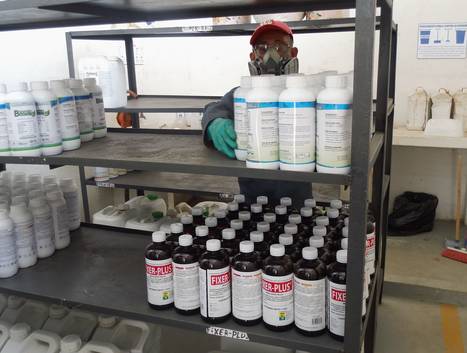
Step 4: Waste management
Practices such as the cleaning of application equipment and disposal of empty pesticide containers, plastic bags treated with pesticides, and other contaminated materials, reduce the risks of contaminating the environment or causing accidental poisoning of people or livestock.
Empty bottles of pesticides are hazardous waste and cannot be reused under any circumstance. The preferred option for managing empty pesticide containers is a collection scheme set up by the plantation or the supplier. In the absence of such a scheme, containers should be triple rinsed and punctured. The rinsate should be sprayed out on the plantation.
An example of a collection scheme is provided by the company Dole, which established arrangements to return empty pesticide bottles to the suppliers. Schemes like this, however, only work where there sufficient numbers of farmers in a close geographic area, in view of the costs of logistics. Since Dole started this collection scheme, the company has reduced direct disposal of empty containers by users by around 90 percent. |
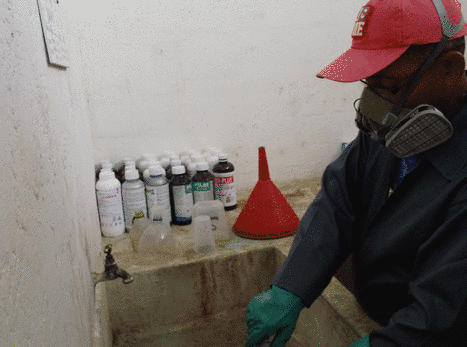
Challenges
- Transition from a synthetic agrochemicals-based pest management to integrated pest management.
- Capacity-building, training and knowledge-sharing in terms of risk reduction are important to change practices that have been in place for many years.
- Additional investment from plantation owners may be required to prevent long-term damages and costs to health, environment and fruit quality.
- Strengthening farmers’ organizations and trade unions can help increasing plantation workers and farmers’ bargaining power in outgrower schemes.
References
References
Clay, J. 2003. World agriculture and the environment: a commodity-by-commodity guide to impact and practices
Pacific Lutheran University. Environmental impact of banana growing
Promusa. Pesticide-reducing practices
FAO. 2004. The World Banana Economy 1985-2002. Chapter 5: Environmental and Social Issues
Cabrera, J., Hernández, E., Padilla, A., Jaizme, M., & López, J. 2010. Banana production under Integrated Pest Management and organic production criteria: the Canary Islands case study
AUGURA. 2009. Identification and Integrated Pest management in Banana en Plantain
USAID. 2014. Training Manual - Integrated Pest Management for banana farmers
FAO. AGP – Integrated Pest Management
Stewardship Community. Disposal of empty crop protection product (pesticide) containers

